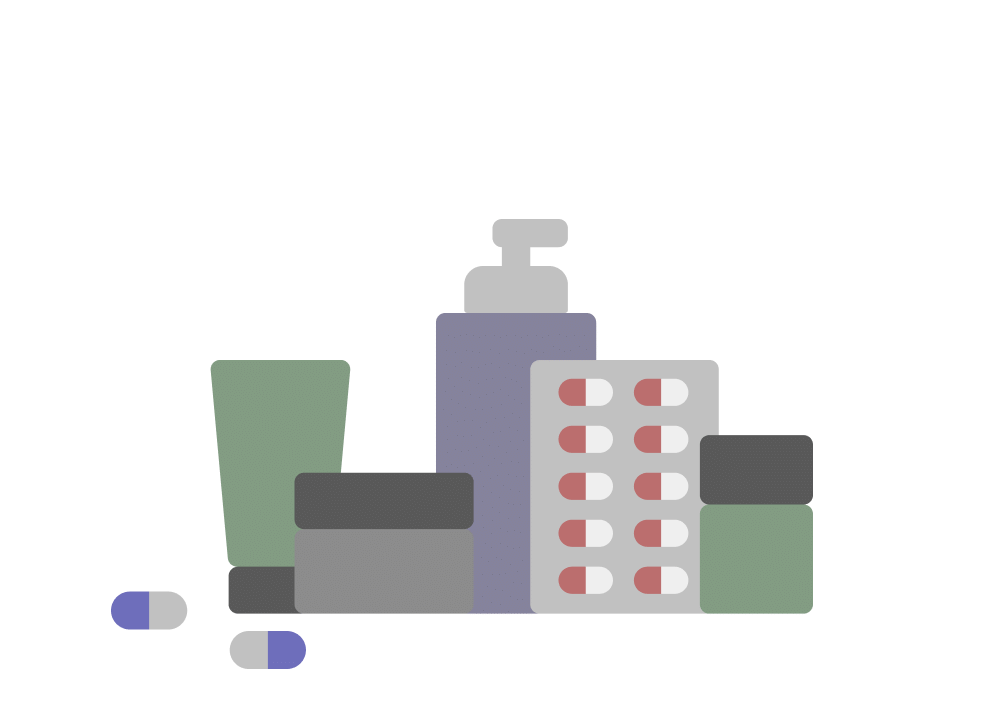
Doil Liniment
Manufacturer
Anthus Pharmaceuticals Pvt Ltd
Salt Composition
Diclofenac (15mg)
Key Information
Short Description
Doil Liniment is used to relieve pain and reduce swelling in your joints and muscles.
Dosage Form
Liniment
Introduction
Doil Liniment may be used 2 to 4 times a day on the affected area depending on how severe your condition is. It should be applied slowly and evenly to the skin until it is rubbed in. You should not use it too often and you should not cover the treated area with a bandage or plaster. It is a safe medicine with few side effects but you may get a skin rash, itching, reddening or burning of the skin. Occasionally a skin rash may be a sign of severe allergic reaction. Tell your doctor straight away if you get a rash with blistering. Doil Liniment is not recommended if you are pregnant or breastfeeding and you should not use it if you are already taking diclofenac (or other similar) tablets.
Directions for Use
This is for external use only. Check the label for directions before use. Apply and massage the liniment on the affected area in a circular motion using your fingertips or as advised by your doctor.
Safety Information
Side Effects
Skin rash Itching Reddening or burning of the skin
Alcohol Warning
No interaction found/established
Breastfeeding Warning
Doil Liniment is probably safe to use during breastfeeding. Limited human data suggests that the drug does not represent any significant risk to the baby.
Pregnancy Warning
Doil Liniment is unsafe to use during pregnancy as there is definite evidence of risk to the developing baby. However, the doctor may rarely prescribe it in some life-threatening situations if the benefits are more than the potential risks. Please consult your doctor.
Interacting Medicines
Nimesulide Oxyphenbutazone Metamizole
How it works
Doil Liniment is a non-steroidal anti-inflammatory drugs (NSAID). It works by blocking the release of certain chemical messengers that cause pain and inflammation (redness and swelling) on the skin.
Quick Tips
Doil Liniment is applied to the skin to relieve inflammation and pain of joints and muscles. It is less likely to cause stomach side effects as compared to oral medication. Gently massage it into the skin of the affected area. Do not cover the area being treated with airtight dressings such as bandages as these may increase the risk of side effects. Do not apply to broken, diseased, infected, inflamed or irritated skin, or to open wounds. Avoid getting it in the eyes, mouth or nose. Rinse with cold water if you accidentally get it in these areas. It may increase the risk of sunburn. Avoid exposing the treated area of skin to excessive sunlight. Do not use it for longer than 14 days unless recommended by your doctor.
Frequently asked questions
Does Doil Liniment work for back pain?
Doil Liniment is a safe and effective option for managing joint pain, particularly in cases of arthritis. It can also be used to treat acute neck pain, back pain, tendonitis, and sprains and strains.
Can I use Doil Liniment for osteoarthritis in the hip?
No, Doil Liniment is not recommended for hip pain. The hip joint is located deep within the body and is unlikely to absorb this medication deep enough to provide relief from hip joint pain.
How to use Doil Liniment?
Gently rub Doil Liniment into clean, dry skin using your hands. Apply it 4 times daily for best results. You may experience quick relief within half an hour, but often it takes a few days of consistent use to see the full benefits. Only apply to unbroken, healthy skin that does not have cuts, open wounds, infections, or rashes. Consult your doctor if you have any doubts about using Doil Liniment. Wash your hands after applying the gel and avoid washing your hands for at least an hour if the treated area is on your hands. Keep the treated area away from direct sunlight to prevent skin reactions.
How long should I use Doil Liniment?
Use this topical medicine as prescribed by your doctor for optimal results.
Can I use any other moisturizer or sunscreen after applying Doil Liniment?
Avoid using lotions, and sunscreens on the same area of skin where you apply Doil Liniment. These products may interfere with how your skin absorbs this medication.
Can I use a heating pad or put a bandage on the area after applying Doil Liniment?
It is not advisable to use any heating pads or bandages on the treated area. Applying these can increase the absorption of the medicine, potentially causing undesired effects.


